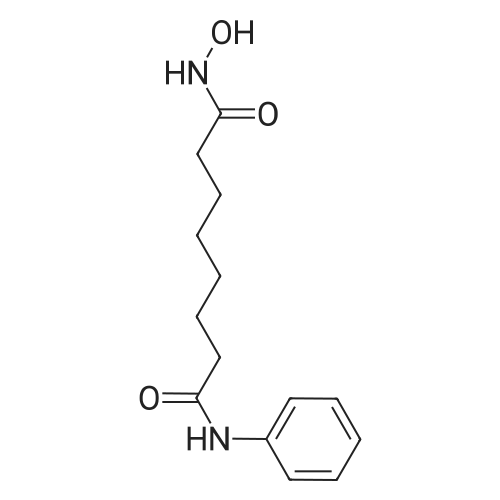Activity of Alkoxyamide-Based Histone Deacetylase Inhibitors Against?Plasmodium Falciparum?Malaria Parasites
Wisam A. Dawood
;
Gillian M. Fisher
;
Franziska J.M. Kinnen
, et al.
Exp. Parasitol.,2024,258,108716.
DOI:
10.1016/j.exppara.2024.108716
More
Abstract: There are more than 240 million cases of malaria and 600,000 associated deaths each year, most due to infection with Plasmodium falciparum parasites. While malaria treatment options exist, new drugs with novel modes of action are needed to address malaria parasite drug resistance. Protein lysine deacetylases (termed HDACs) are important epigenetic regulatory enzymes and prospective therapeutic targets for malaria. Here we report the antiplasmodial activity of a panel of 17 hydroxamate zinc binding group HDAC inhibitors with alkoxyamide linkers and different cap groups. The two most potent compounds (4a and 4b) were found to inhibit asexual P. falciparum growth with 50% inhibition concentrations (IC50's) of 0.07 μM and 0.09 μM, respectively, and demonstrated >200-fold more selectivity for P. falciparum parasites versus human neonatal foreskin fibroblasts (NFF). In situ hyperacetylation studies demonstrated that 4a, 4b and analogs caused P. falciparum histone H4 hyperacetylation, suggesting HDAC inhibition, with structure activity relationships providing information relevant to the design of new Plasmodium-specific aliphatic chain hydroxamate HDAC inhibitors.
Keywords:
HDAC inhibitor ;
Malaria ;
P. falciparum ;
Antiplasmodial
Purchased from AmBeed:
25952-53-8 ;
149647-78-9 ;
617-86-7

HDAC Inhibitors recapitulate Human Disease-Associated Microglia Signatures in vitro
Haage, Verena Claudia
;
Tuddenham, John F
;
Bautista, Alex
, et al.
bioRxiv,2024.
DOI:
10.1101/2024.10.11.617544
PubMed ID:
39416157
More
Abstract: Disease-associated microglia (DAM), initially described in mouse models of neurodegenerative diseases, have been classified into two related states; starting from a TREM2-independent DAM1 state to a TREM2 dependent state termed DAM2, with each state being characterized by the expression of specific marker genes1. Recently, single-cell (sc)RNA-Seq studies have reported the existence of DAMs in humans2-6; however, whether DAMs play beneficial or detrimental roles in the context of neurodegeneration is still under debate7,8. Here, we present a pharmacological approach to mimic human DAM in vitro by exposing different human microglia models to selected histone deacetylase (HDAC) inhibitors. We also provide an initial functional characterization of our model system, showing a specific increase of amyloid beta phagocytosis along with a reduction of MCP-1 secretion. Additionally, we report an increase in MITF expression, a transcription factor previously described to drive expression towards the DAM phenotype. We further identify CADM1, LIPA and SCIN as DAMmarker genes shared across various proposed DAM signatures and in our model systems. Overall, our strategy for targeted microglial polarization bears great potential to further explore human DAM function and biology.
Keywords:
Disease-associated microglia (DAM) ;
in vitro model systems ;
human microglia ;
functional analysis
Purchased from AmBeed:
209783-80-2 ;
149647-78-9


 Chemistry
Chemistry
 Pharmaceutical Intermediates
Pharmaceutical Intermediates
 Inhibitors/Agonists
Inhibitors/Agonists
 Material Science
Material Science














 For Research Only
For Research Only
 120K+ Compounds
120K+ Compounds
 Competitive Price
Competitive Price
 1-2 Day Shipping
1-2 Day Shipping




